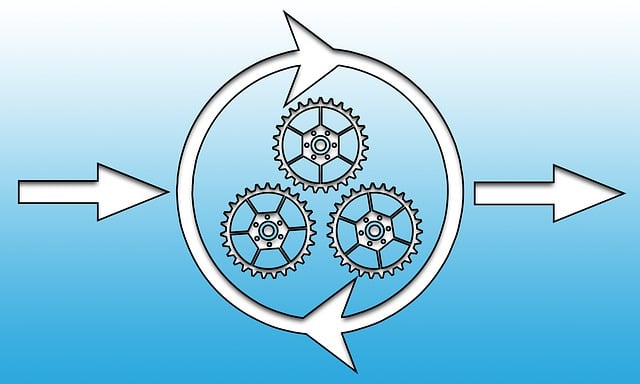Oregon's Department of Human Services (DHS) is entrusted with safeguarding children's well-being through a multi-step child welfare process. This comprehensive guide simplifies the intricate DHS procedures, empowering families, caregivers, and professionals to collaborate effectively. The process begins with reporting suspected abuse or neglect, leading to investigations and caseworker interventions. DHS conducts thorough assessments, making informed decisions on support services, protective orders, or foster care placements. Case planning and service coordination offer tailored guidance, including counseling, parenting classes, and financial aid. Court involvement ensures legal soundness in permanency plans focusing on reunification, relative placement, or adoption. Post-case closure, ongoing support resources help families thrive and promote children's healthy development. Understanding the DHS process guide is vital for navigating this system effectively.
“Uncovering the Oregon DHS Child Welfare Process: A Comprehensive Guide
Oregon’s Department of Human Services (DHS) plays a pivotal role in safeguarding and supporting vulnerable children and families. This article serves as your definitive guide to navigating the complex yet crucial DHS child welfare process. From recognizing when to report concerns to understanding the various stages of assessment, intervention, case planning, and court involvement, we break down the DHS procedures step by step. By exploring these key aspects, you’ll gain valuable insights into ensuring the best outcomes for families in need.”
- Understanding Oregon DHS Child Welfare: An Overview
- Initiating the Process: When and How to Report Concerns
- Assessment and Intervention: The Early Stages of DHS Involvement
- Case Planning and Service Coordination: Ensuring Support for Families
- Court Involvement and Permanency Planning: Finding Stable Homes
- Post-Case Closure: Ongoing Support and Community Resources
Understanding Oregon DHS Child Welfare: An Overview

Oregon’s Department of Human Services (DHS) is charged with the critical task of ensuring the safety and well-being of children within the state. The DHS child welfare process is a comprehensive system designed to protect vulnerable youth, offer support to families in need, and provide a stable environment for children facing various challenges. This process involves a series of steps that aim to assess, intervene, and ultimately resolve issues related to child safety and family stability.
Understanding the Oregon DHS child welfare process is essential for anyone involved or interested in this sector. As a comprehensive guide, it navigates through the complex procedures, ensuring that all parties understand their rights and responsibilities. The overview simplifies the intricate web of DHS welfare procedures, enabling families, caregivers, and professionals to collaborate effectively in creating positive outcomes for children.
Initiating the Process: When and How to Report Concerns

In Oregon, the Department of Human Services (DHS) is responsible for initiating and managing the child welfare process. If you have concerns about a child’s safety and well-being, it is crucial to understand when and how to report these issues. The process begins with receiving a referral from various sources, including concerned individuals, healthcare professionals, law enforcement, or schools. Any individual who suspects that a child is at risk of abuse or neglect can file a report with DHS. This act triggers an investigation to gather information and determine if the allegations are valid.
Navigating the DHS process involves understanding specific procedures designed to ensure the safety and stability of vulnerable children. The agency prioritizes reporting concerns promptly, as timely intervention can prevent potential harm. Upon receipt of a referral, DHS assigns a caseworker who will assess the situation, interview relevant parties, and make informed decisions regarding the next steps in the child welfare process. This overview highlights the importance of recognizing signs of abuse or neglect and taking proactive measures to connect affected children with the necessary support systems.
Assessment and Intervention: The Early Stages of DHS Involvement

When a concern for a child’s safety arises, Oregon DHS (Department of Human Services) steps in to assess and intervene, marking the early stages of the child welfare process. This crucial phase involves receiving reports of suspected abuse or neglect, conducting thorough investigations, and determining the immediate needs of the child and family. DHS workers carefully gather information from various sources, including law enforcement, medical professionals, and educators, to form a comprehensive understanding of the situation.
During this initial period, assessment tools are utilized to evaluate the home environment, parental abilities, and the child’s overall well-being. This enables DHS to make informed decisions regarding interventions, which may include providing family support services, ordering protective orders, or temporarily placing the child in foster care while ensuring their safety and stability. Understanding the Oregon DHS child welfare process is essential for families facing these challenges, as it empowers them to navigate the DHS procedures effectively.
Case Planning and Service Coordination: Ensuring Support for Families

Navigating the Oregon DHS child welfare process is a critical step in ensuring the well-being and support of families. The department’s case planning and service coordination efforts play a pivotal role in this journey, offering comprehensive guidance and resources to those in need. Through this process, social workers collaborate closely with families to create tailored plans addressing specific challenges and goals. These plans may include access to various services such as counseling, parenting classes, and financial assistance, all aimed at strengthening family dynamics and promoting the safe and stable upbringing of children.
Understanding the DHS child welfare process guide allows families to actively participate in their support network. Service coordination involves connecting families with relevant community resources, ensuring they receive consistent care and guidance throughout their journey. This meticulous approach recognizes that every family’s situation is unique, necessitating personalized strategies for effective intervention and long-term success. By embracing this collaborative model, Oregon DHS fosters an environment where families can thrive and rebuild.
Court Involvement and Permanency Planning: Finding Stable Homes

In the event that a child is deemed at risk or unable to live safely with their family, the Oregon Department of Human Services (DHS) initiates the child welfare process, aiming to protect and nurture the child’s well-being. Court involvement becomes a critical aspect of this journey as it plays a pivotal role in ensuring stable homes for vulnerable children. When DHS refers a case to court, a judge reviews the evidence and makes informed decisions regarding the child’s future. This legal process grants the authority to implement permanency plans, which are structured to provide long-term stability and security for the child.
Navigating the DHS process requires understanding that these permanency plans focus on several options: reunification with the biological family if safe, placement with a relative, or adoption. Each path is meticulously designed to offer a child a sense of belonging and security. By involving the court, Oregon DHS ensures that these decisions are legally sound and aligned with the best interests of the child, ultimately fostering an environment where they can thrive.
Post-Case Closure: Ongoing Support and Community Resources

After a case is closed, Oregon DHS continues to offer support and resources to families involved in the child welfare system. This ongoing assistance is crucial for ensuring that families can maintain stability and well-being following the formal process. The DHS provides various community-based services designed to strengthen family connections and promote healthy development for children. These services include access to counseling, parenting classes, and educational programs tailored to individual needs.
Navigating the DHS process can be challenging, but understanding the available resources is essential. The agency offers comprehensive guides and resources to help families and caregivers gain insights into the child welfare process. By utilizing these tools, parents can better understand their rights, access support networks, and make informed decisions moving forward. This ongoing support system plays a vital role in fostering resilience and positive outcomes for children and families within the DHS welfare procedures.
